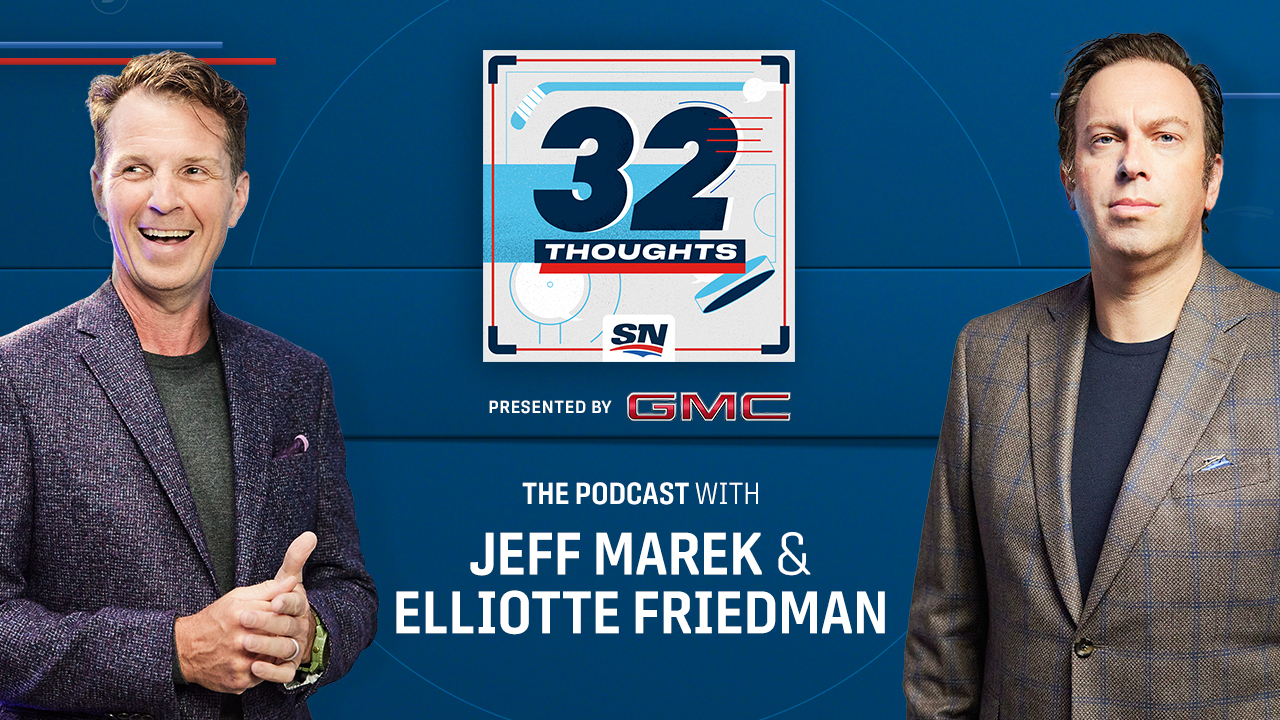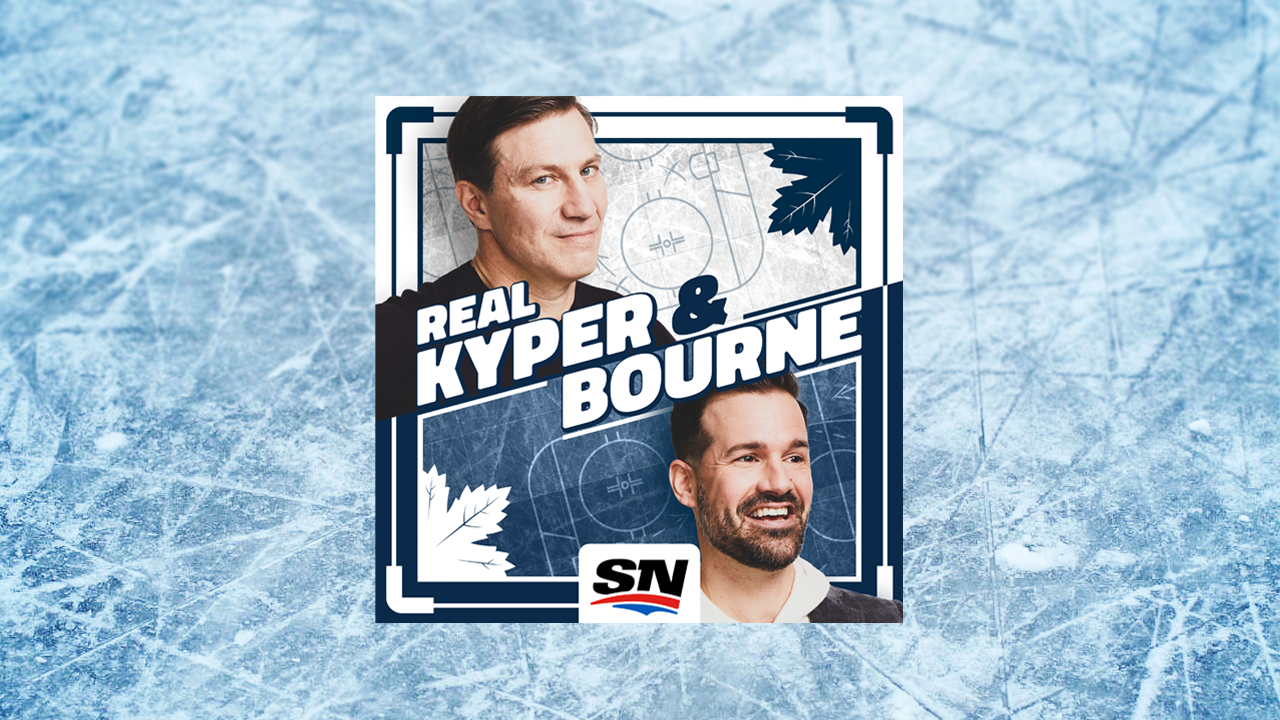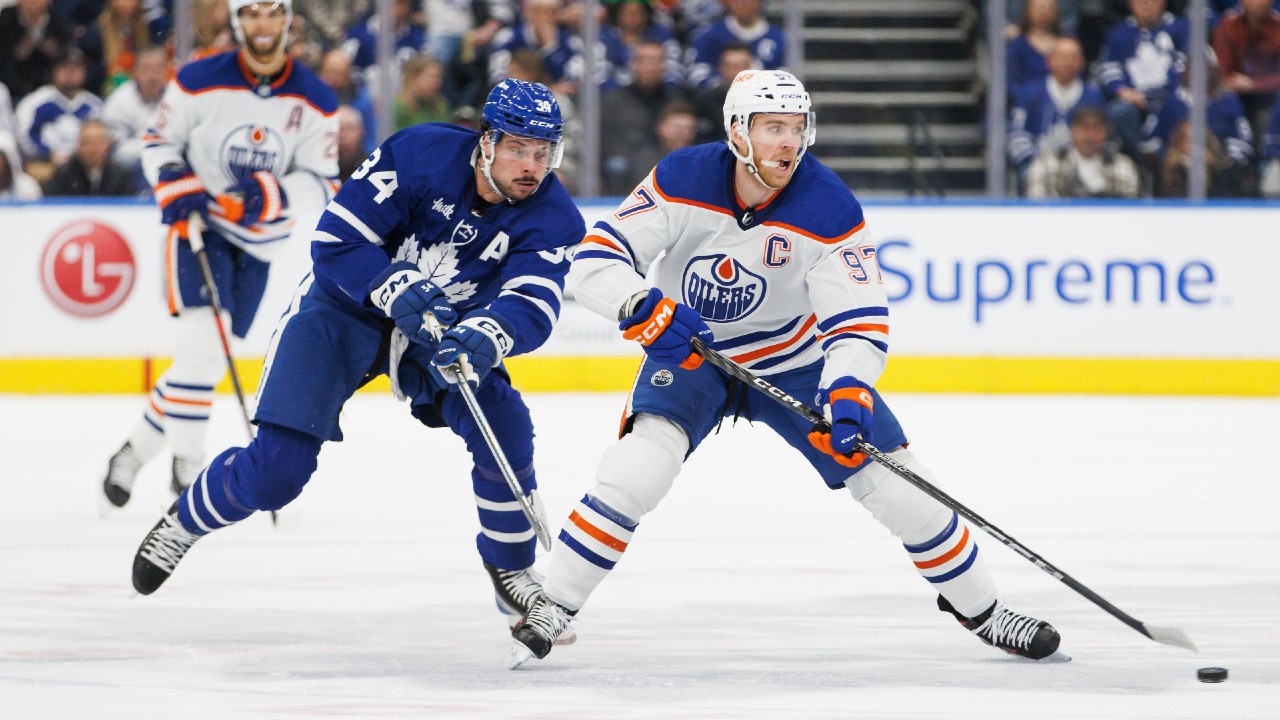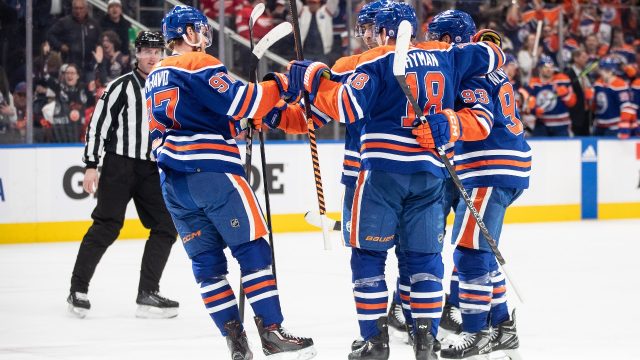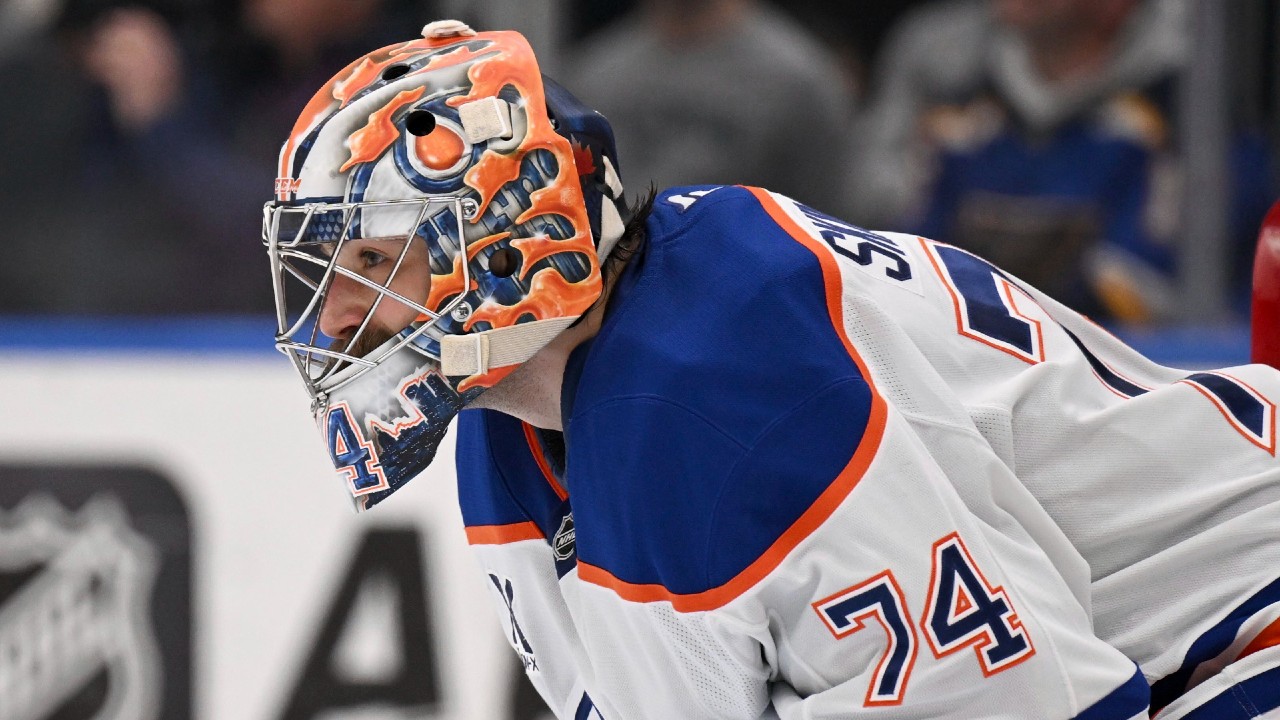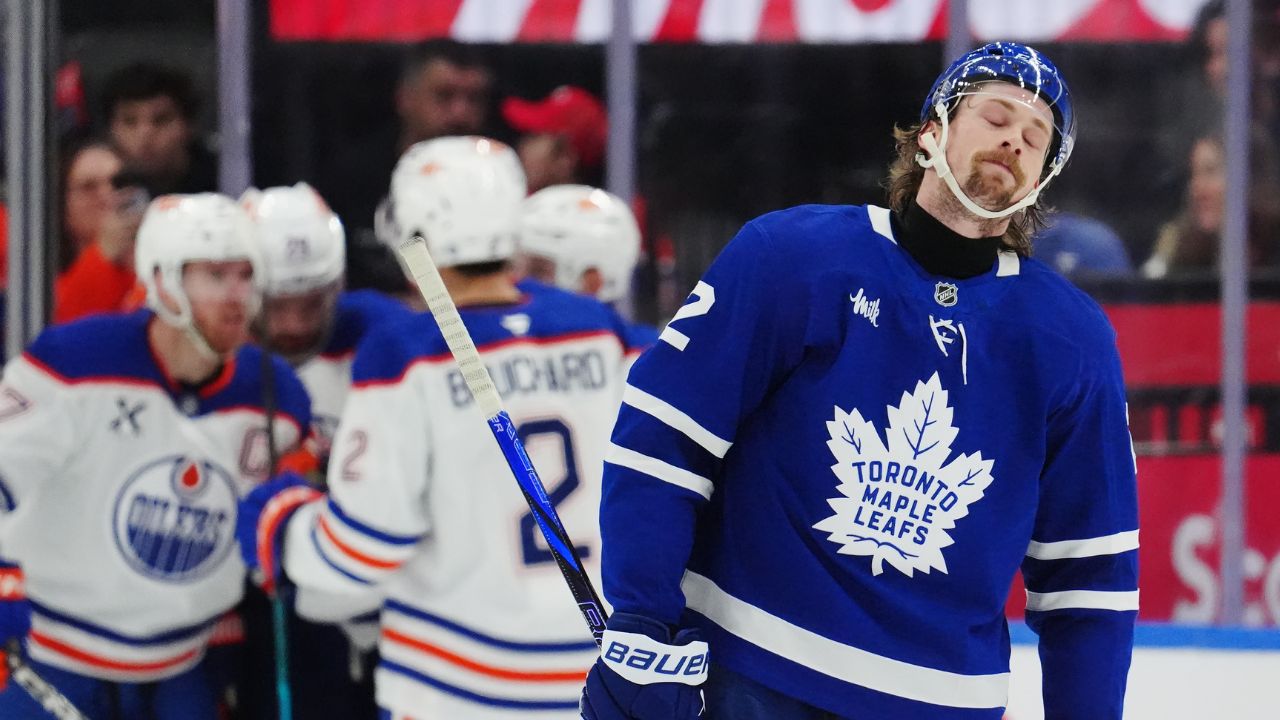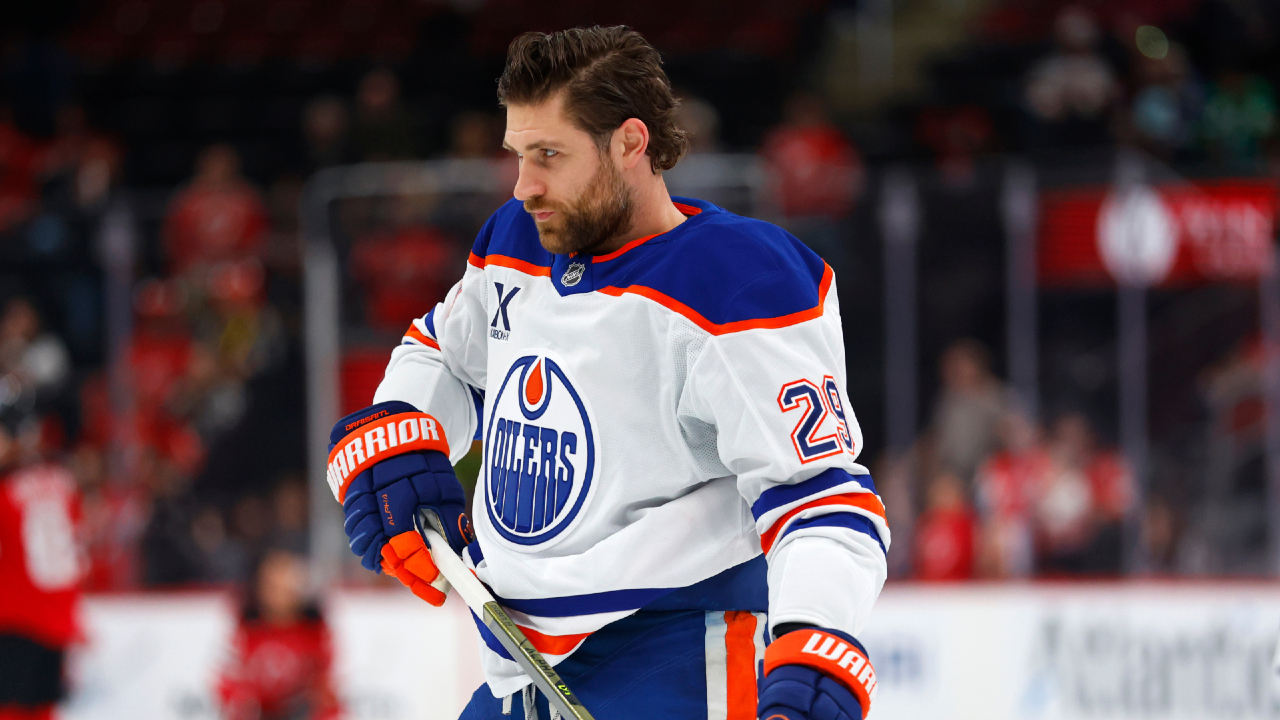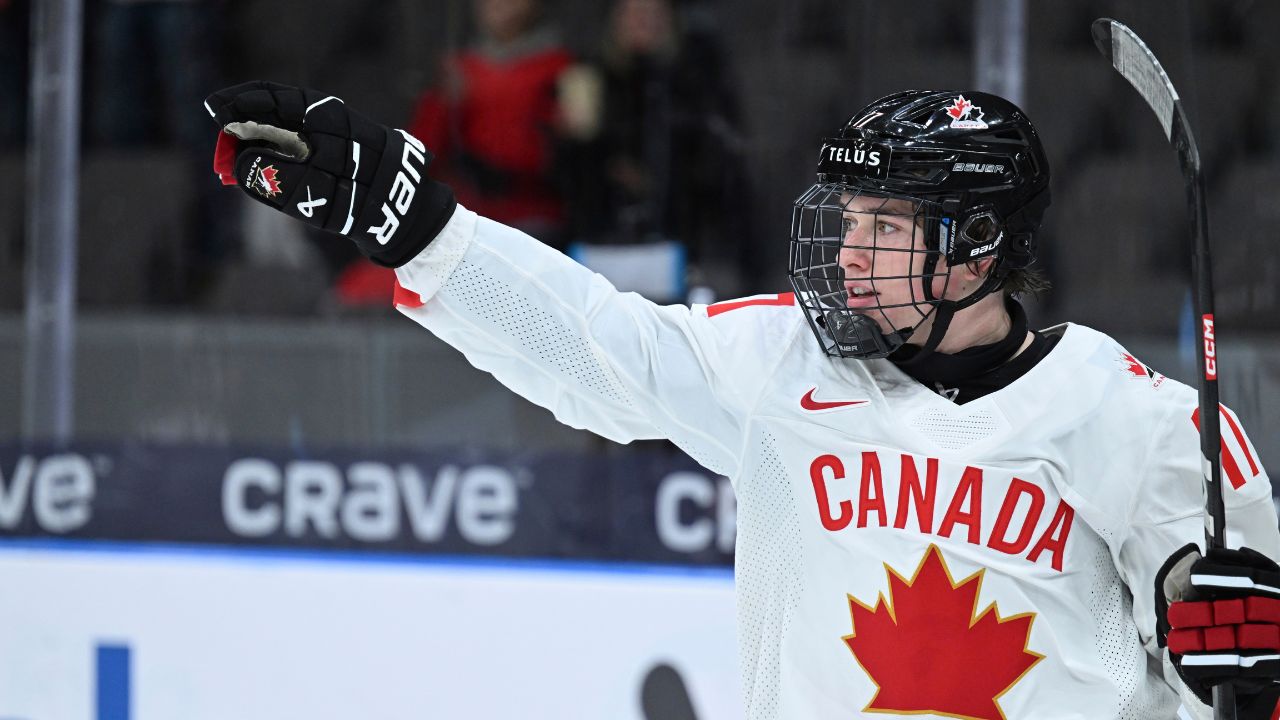
Plenty has happened since our last rankings in the middle of January. After digesting all that was the world juniors, scouts were back on the road to attend a number of prospect events from the middle of the month through to the start of February.
The All-American game, which features a combination of players from the USNTDP and the USHL, was well-attended, but not necessarily well-received. Scouts felt the game lacked intensity and competitiveness. Further, scouts lamented the fact that a handful of players weren’t eligible for the 2024 draft, including the game’s MVP, top player James Hagens.
A week and a half later, the CHL/NHL Top Prospect game took place in Moncton. The owner of the Moncton Wildcats, Robert Irving, enjoys putting his stamp on big-time events. He loves to show off his city, his team and the team’s facility, Avenir Centre. The CHL built in an additional day to the program, which was designed to reduce travel stress, especially for WHL players, some of whom came from as far away as four time zones. The extra day also made for plenty of time for players to do media interviews, complete on- and off-ice testing, and still have enough rest to compete in the game with energy and enthusiasm. The game itself was highly competitive and, in general, the event was as successful as it’s ever been.
Coming out of the CHL game, Sportsnet’s Jeff Marek tweeted that a format change was coming for the prospects game. The idea that was thrown out was a two-game competition between the CHL’s top prospects and the best players from the USNTDP U18 and the USHL.
For example, Sasha Boisvert is from Canada, but he would participate on the U.S. side because he plays in the USHL. So, not necessarily a true Canada-vs.-USA format, but enough to create plenty of intrigue.
An informal poll of scouts revealed heavy interest, for a number of reasons. First, the USA-Canada theme would instantly create a more competitive environment. Depending on an alternating venue schedule done year-to-year or game-to-game, scouts could settle into one place, opening up a window for team meetings. Lastly, the event could be marketed to a higher level, generating more financial support for each of the two entities.
From a logistical stand point, on- and off-ice testing could be streamlined, providing scouts with data for what would be a high percentage of the best draft-eligible players playing in North America. Making one of the teams would be highly competitive because the rosters spots would be cut in half due to having two separate events. Ideally, if there was a way to include NCAA players, the potential to have all of North America’s best prospects in one spot for two games would be a great bonus for NHL scouts.
Stay tuned to see if this becomes a reality, but the idea of amalgamating the two games would provide a win-win scenario for everyone involved.
As for this month’s rankings, it’s crowded at the top. Macklin Celebrini remains in a class by himself as the projected first-overall pick. He continues to play a complete game and, as of this writing, he is the NCAA’s top goal-scorer while also the loop’s youngest player. (He won’t turn 18 until June.) The top-10 players are loaded with defencemen who keep leap-frogging one another. The variety of defencemen is also intriguing, and NHL teams picking in the top 10 will be able to lean to an organizational bias or need-based strategy.
After Celebrini, the forward group is quite interesting. Ivan Demidov is the next most talented forward, yet he can’t get out of the MHL and there’s always the risk of the player not coming to North America or not being allowed out of Russia. Spokane’s Berkly Catton is the safest bet. He looks like a future letter wearer, not to mention his deft skill.
Outside the top 10, more forwards enter the fray. Tij Iginla continues to play well in Kelowna, and his name alone adds value to what is already a really good player. Cole Eiserman, of the USNTDP, once thought to be the consensus second-overall pick, has slipped outside of the top 10, but if a team is looking for a pure goal-scorer, he could find himself back inside the top third of the draft. Cayden Lindstrom of Medicine Hat hasn’t played since Dec. 16, but at six-foot-four, 215 pounds, he will draw considerable interest from teams that appreciate the size-and-skill combination.
As we move farther down the rankings, it’s clear that things will open up considerably around 20th overall. In these rankings, that grouping includes Adam Jiříček of Czechia and fellow defenceman Aron Kiviharju, both of whom remain out of their respective lineups. Pre-season rankings had both ranked inside the top half of the first round; and both might have enough currency in previous seasons/events to make them attractive higher than where I have them placed. Furthermore, there is precedence for drafting players who have spent a larger portion of their draft-eligible season on the injured list.
A number of NHL teams feel the same way. Vancouver and Winnipeg have each moved their 2024 first-round picks in trades that have made them better immediately. With teams projected to pick 20th or later, this tactic may be repeated as we creep toward the March 8 trade deadline. On the receiving end of those picks, Calgary and Montreal are happy to accumulate the additional draft currency and elevate their risk tolerance or use those picks to address a positional need.
Digesting the above, here’s our last rankings before the trade deadline, with our next edition due about a week after the deadline passes.
1. Macklin Celebrini, C, Boston University (NCAA): There’s no slowing this guy down. World juniors, NCAA play, Beanpot, all the while averaging almost a goal per game.
2. Anton Silayev, D, Torpedo (KHL): With reach and great skating ability, he can close space extremely quickly. Unexpectedly, he will make small-area plays, especially on the breakout.
3. Artyom Levshunov, D, Michigan State University (NCAA): He runs the whole gamut as a two-way defenceman. He can get up ice in a hurry and is not afraid to stay low in the offensive zone. There remains some immaturity in his game.
4. Sam Dickinson, D, London Knights (OHL): From the moment he stepped into the OHL, he’s improved steadily. That growth curve has scouts thinking there’s still plenty of room for growth in his game.
5. Ivan Demidov, RW, SKA St. Petersburg (KHL): He’s well above the league he’s playing in and likely won’t get a chance to change that situation. This will give pause to some scouts for a lack of experience against other high-end teams/players.
6. Konsta Helenius, C, Jukurit (Liiga): It’s disappointing not to see him at the Five Nations, but his Liiga team is making a run, and he’s a big part of that run.
7. Carter Yakemchuk, D, Calgary Hitmen (WHL): He continues his meteoric rise inside the top 10 and has a chance to surpass the 30-goal plateau.
8. Zeev Buium, D, U of Denver (NCAA): He’s bidding to become a point per game defenceman, which hasn’t happened in NCAA play. There’s much more to him than his ability to produce. His mobility allows him to be an effective three-zone player.
9. Berkly Catton, C, Spokane Chiefs (WHL): He traveled four time zones getting back to Spokane after the top prospects game, and has six multi-point efforts in his last nine games since.
10. Zayne Parekh, D, Saginaw Spirit (OHL): He can be too casual at times, but his offensive instincts and his ability to execute plays all over the ice are extremely attractive.
11. Tij Iginla, C, Kelowna Rockets (WHL): Uber-talented, the son of Hall of Famer Jarome continues to carve his own path. He has plenty of deception in his game that creates space to use his wicked shot.
12. Cayden Lindstrom, C, Medicine Hat Tigers (WHL): He was starting to find his grove before getting injured in mid-December. Getting back in the lineup for at least some games down the stretch will be important.
13. Cole Eiserman, LW, USNTDP: He hasn’t slipped as much as being surpassed by players playing more-coveted positions. He may be the most proficient goal-scorer in this draft class, and that means something.
14. Sacha Boisvert, C, Muskegon Lumberjacks (USHL): He’s loaded with creativity and vision, and is scoring goals with a shot that explodes off the stick.
15. Liam Greentree, LW, Windsor Spitfires (OHL): He brings a power-forward element to the game with good touch around the net, yet shoots it well enough to score from a distance.
16. Michael Brandsegg-Nygard, RW, Mora (Allsvenskan): He’s a steady player who checks all the boxes, but lacking one dynamic element doesn’t allow him to stand out from the crowd.
17. Emil Hemming, RW, TPS (Liiga): He’s quick off the mark with his first three steps allowing him to back off defenders or escape quickly from them. He’s effective coming off the wall and getting into scoring position.
18. Andrew Basha, LW, Medicine Hat Tigers (WHL): He’s a tireless worker and fearless competitor who possesses plenty of skill to make and finish plays.
19. Beckett Sennecke, RW, Oshawa Generals (OHL): His silky-smooth hands allow him to make small-area plays. He is deceptive in his shot-making.
20. Igor Chernyshov, LW, Moscow Dynamo (MHL): He has been in a difficult spot bouncing from the MHL to the KHL, which is akin to a North American player bouncing between the CHL/USHL and the NHL. He is a dynamic player off the rush.
21. Trevor Connelly, C, Tri-City Storm (USHL): He’s on an 11-game heater as he remains one of the most talked-about prospects in this draft class.
22. Jett Luchanko, C, Guelph Storm (OHL): He benefitted from the tutelage of Matthew Poistras last season and benefitted more this year as Poistras’ NHL success opened up more prime time.
23. Adam Jiříček, D, HC Plzen (Extraliiga): His currency from events past and his brother’s high draft position will play in his favour, and likely have him taken higher than this ranking would suggest.
24. Aron Kiviharju, D, Jokerit (Liiga): The latest projections have him back from injury in time for the world U18 tournament, where it will be fascinating to see if he can regain his stride there.
25. Michael Hage, C, Chicago Steel (USHL): He uses his reach effectively to keep the puck away from defenders, and possesses excellent puck skills and a quick release that goalies have trouble tracking.
26. Terik Parascak, RW, Prince George Cougars (WHL): He is always around the puck and is a threat from the tops of circles down because of a sneaky release and uncanny accuracy.
27. Dean Letourneau, C, St. Andrew’s (HS): St. Andrew’s continues to earn respect as a developmental destination for high-end prospects. Letourneau is all of that, in a frame that will always be coveted by NHL teams.
28. Cole Hutson, D, USNTDP: His eight points in four games at the Five Nations will be a springboard to the rest of the season. The U18 worlds will be a great test to gauge how far he’s come from the start of the season.
29. Leo Sahlin Wallenius, D, Vaxjo (U20): His showing at the Five Nations tournament was another step in his rise to prominence. He has benefitted by playing close to his peer group in league play, as opposed to getting limited minutes in either the Allsvenskan or SHL.
30. Ryder Ritchie, RW, Prince Albert Raiders (WHL): Injury setbacks combined with some of the draft year blues have him ranked lower than where he should be.
31. Lucas Pettersson, C, Modo (U18): Shifty, two-way centre leans more playmaker than scorer. He’s able to handle and execute efficiently in high-pressure situations.
32. Colton Roberts, D, Vancouver Giants (WHL): After lengthy conversation with colleague Jason Bukala, I can’t help but think of his rawness, but also his upside.


